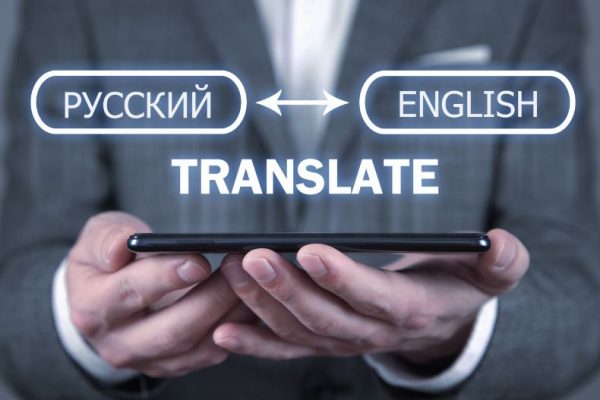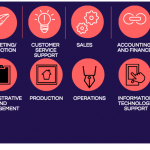Audio-visual content is at the heart of the modern world.
The number of people using YouTube was 2 million in 2010, but in 2022, it was 2.5 billion. We can see similar trends across video-on-demand platforms, be it Hulu, Amazon Prime, or Netflix.
Be it ease of understanding or its engaging nature, audio-visual content has surpassed other modes of content.
One of the fundamental challenges of audio-visual content is language. It’s more of an opportunity than a challenge.
If you do not know Korean, for example, you cannot imagine reading a Korean novel, or even a graphic novel. But the K-drama wave has swept the world.
There are two factors to the success of Korean culture in the west:
- Advanced translation and subtitling systems
- The expressive nature of video content, where you can understand the overall setting without knowing the language
Our subject today is subtitling, and we will show how AI-based subtitling can help businesses grow internationally through content.
Automatic Subtitling: How AI is helping businesses
Automatic subtitling does precisely what the term suggests. If you have ever added subtitles to a video manually, you know how time-consuming and difficult it is. It makes very little sense to employ a skilled person in what is essentially a mechanical task.
With the advent of automatic subtitling, our approach to subtitling is radically changing.
Today no efficient business wastes human potential in the repetitive task of subtitling. Instead, they let machines produce results that are much faster and somewhat better.
Business growth is measured by hard numbers alone.
If subtitling technologies could not provide any tangible benefit to the businesses that use them, the hype around such tech would have died. The fact that it hasn’t shows the potential and usefulness of AI-based subtitling.
Why subtitles should be a concern for all businesses
Before proceeding, note that we are only talking about businesses/companies that employ content marketing for organic growth and reach. There are several studies, surveys, case studies, and statistical figures that prove the efficacy of content marketing. Today it is taken for granted that content marketing is among the most potent marketing options for businesses of all sizes.
Audio-visual content is at the heart of content marketing. Be it branded podcasts or interactive social media content, video has several advantages over text/audio alone. If you are creating audio-visual content but not adding subtitles to them, you are making a big mistake.
To put it in a nutshell, subtitling helps you reach more people. It helps you reach those who cannot hear and also those who do not want to hear. Subtitling also helps you reach people who do not understand the language of the video.
The role of AI in subtitling

Happy Scribe’s automatic subtitling services are an excellent demonstration of how AI can be incorporated into subtitling. Happy Scribe is not the only tool in this space, though it is one of the better-known subtitling services. The growth of these subtitling services shows the usefulness of AI in making subtitling easier.
There’s a huge difference between a crude transcript and a time-synchronized subtitle. In the former, the role of precision is very less. Transcripts merely represent spoken words as written words. In a subtitle, the written words have to accurately convey the meaning and emotion of the spoken word.
Transcription in itself is a time-consuming task. When you add subtitles to it, the process becomes even more long-drawn. That’s where AI plays a fundamental role. As we can see in other AI-based applications, reduction in time is one of the primary commercial goals of AI-based tools. The same principle applies in the field of subtitling.
If you can increase your output 10x while simultaneously reducing your expenditure with technology, you’ll undoubtedly adopt it. AI-based subtitling does precisely that, and it’s no wonder more and more businesses are adopting the tech.
Making subtitles better with technology
Artists use tech to enhance their art, be it a singer or a painter. With an automatic subtitling tool, you can make your existing subtitles better and more accurate.
Subtitling tools are not only for generating new subtitles. You can use them to improve the subtitles you have already made. This exercise will also give you an idea about the quality of the tool you are using.
Since automatic subtitling involves processing natural speech, there’s always a small chance of errors. If certain words were not pronounced correctly in the video, they may not be subtitled properly. It is common to find a 2% to 5% error rate in automatic subtitling. That’s where we need human expertise to come into the picture.
Automatic subtitling helps you with quick results that are more than 90% accurate. The remaining 10% requires human expertise. At the same time, top-tier automatic subtitling tools have an even lower error rate. If you are comparing different tools, having the space to manually correct subtitles is very important. It will help you understand the pros and cons of the tool you are using and ensure that you take an informed decision.
Food for thought: Where do we see automatic subtitles all the time?
If you enable closed captions on a YouTube video that does not have any subtitles, you can see automatic subtitling at work. The results, however, are crude at best. YouTube can accurately provide subtitles when the pronunciations are clear and there is no background noise or chatter.
Modern automatic subtitling tools like Happy Scribe do a much better job than YouTube in transcribing and subtitling. You can use any of the tools to see the difference for yourself. But YouTube gives a good example of automatic subtitling that most of us come across.
How to pick an automating subtitling tool?
There are various approaches you can take when selecting an automatic subtitling tool. Basing your decision on price alone can be a bad decision. If your only reason behind choosing one automatic subtitling tool is its price tag, you need to evaluate other factors as well.
For example, if the cheaper subtitling tool comes with an average of 10% error but spending a little more can get you an average 2% error, you are better off spending that money.
While manual editing is important and must be done at all times, it should not take up a lot of time. If it ends up taking a lot of time, it beats the purpose of using an automatic subtitling tool in the first place.
Error rate and speed of output are the two most important factors to consider when choosing an automatic subtitling tool.
Cost is obviously an important metric, but it should not be the only metric. With so many available choices, picking one can be difficult. If you have the time, access the free trials of multiple tools before deciding on one.
You can look at online review portals to see which are the best automatic subtitling tools available. But nothing will be more informative than using the tools firsthand.
While there are several automatic subtitle tools, only a few are at the top of the game. Make a list of these and go through them one by one.
Translation and subtitling

When we are producing subtitles in the same language as the video, we are barely scratching the potential of automatic subtitling tools.
Automatic subtitling tools are now able to recognize and process several languages besides the most popular ones. For example, Happy Scribe has support for languages like Uzbek, Zulu, Macedonian, Swahili, and a lot more. Automatic subtitling is now not restricted to common languages like English and Mandarin.
Translation, however, is quite different from subtitling. It adds a layer of difficulty to the subtitling process. In the field of translation, AI has not improved significantly.
The most popular AI-based translation service in the world – Google Translate – produces comical results often. The issue is at the technology level where AI cannot yet accurately convey the emotions and connotations behind words. It becomes even more challenging when dealing with two vastly different languages in terms of grammar and syntax.
Coordinating translation with subtitling is crucial in content marketing. In the modern multicultural world, targeting only one linguistic group is not a smart approach. It is even more relevant for businesses that trade internationally. Content in regional languages is a widespread phenomenon that big enterprises and small businesses are adopting alike.
HappyScribe and other automatic subtitling tools often give you a translation service as well, but it’s human translation. The price tag increases accordingly. If multi-language content is on your mind, translation services will come in handy. Today we can confidently say that the future of content is multilingual.
Conclusion
Over the next decade or so, automatic subtitling technologies will completely change the subtitling industry.
The introduction of AI in subtitling technology makes it possible to envision accurate subtitling at amazing speeds.
We hope this blog post will inspire you to look into emerging technologies and understand how they can help businesses grow.











